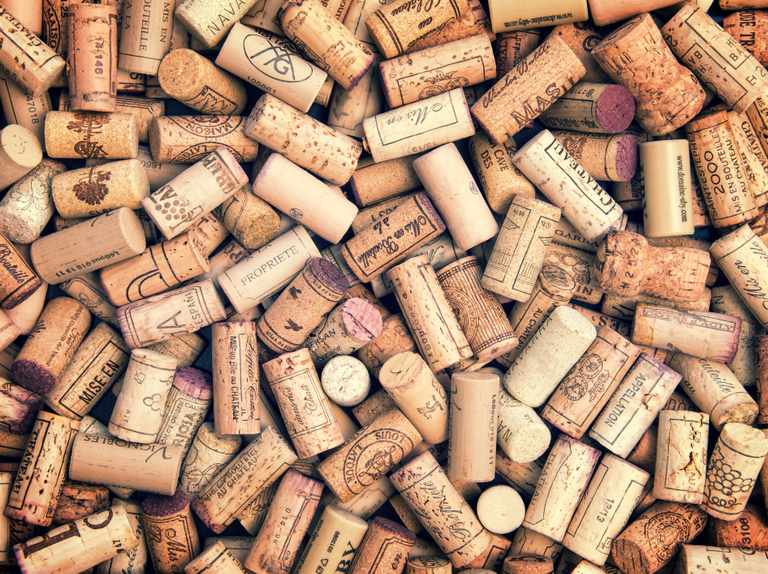Fact or Fiction Friday All cork stoppers are biodegradable.

The statement is true and false! See the last bullet point to find out why.
Other interesting facts about cork .........
- Cork is made from the bark of cork oak trees (also known as Quercus suber).
In Portugal, where there is the largest cork oak forest area in the world, the cork oak is the national tree and has been protected by law since the 13th century. A growing awareness of the value of the ecosystem of the cork oak forest has led to important initiatives in reforestation and the systematisation of good practices. It is a way of ensuring the future, without forgetting the old saying: “Whoever cares for their grandchildren, plants a cork oak”.
After being picked from the trees, the bark is placed on pallets ready to be boiled. The boiling process helps to soften and clean the bark. Finally, the cork is flattened, graded and cut into smaller more workable pieces.

- Cork and Climate Change
Harvesting cork bark assists in the absorption of CO2 – a greenhouse gas that causes climate change. In fact, harvested cork trees absorb 3-5 times more CO2 than non-harvested trees. Cork oak trees in Portugal alone help offset 10 million tons of carbon every year. Cork trees are also important producers of oxygen.
- Cork Trees Are Harvested, Not Cut Down
Cork stoppers are made from the bark of a cork oak tree, not the tree itself. The cork trees are not cut down, but pried of their outside layer. Completely renewable and sustainable, harvesting bark does not harm the tree. Each time cork is harvested; cork bark regenerates itself (and in doing so absorbs CO2). Cork trees undergo an initial 25 years of growth, after which they’re able to be harvested every nine years. The total lifetime of a tree can be up to a staggering 300 years, providing the harvesters with over 1.5 tons of cork depending on the size of the tree.
As well as being regenerative, the trees also require minimal resources to grow. There’s no need for things like fertilizer, pesticides, or pruning. This results in the cork having a minimal carbon footprint compared to many other materials.
Once a cork oak tree has been stripped of it’s bark, it absorbs 3-5x more CO2 than usual in order to aid the regeneration process.
- Cork Processing
After being picked from the trees, the bark is placed on pallets ready to be boiled. The boiling process helps to soften and clean the bark. Finally, the cork is flattened, graded and cut into smaller more workable pieces.
- If The Trees Go, So Do the Animals
Cork forests – or ‘montados’ in Portuguese – rank among the top biodiversity hotspots in the Mediterranean and Europe. They are home to a staggering 135 plant species and 42 bird species, many of who are endangered or critically endangered. They have such an important role for nature and people that they are protected by law.
- Cork Vs Screw Caps
Cork stoppers are punched out of strips of cork bark. Simple as that. The manufacture of screw caps and plastic stoppers, on the other hand, involves higher non-renewable energy consumption (not to mention the production of toxic by –products).
- Forest Fire Prevention
The thick bark on cork oak trees acts as a protective barrier against fire and heat. This protection extends to the forest itself and the animals within it. In fact, the scientific name for these species of tree is pyrophytes – which literally mean ‘fire plants’.
- Social Impacts
Cork is a vital source of regional rural employment. Cork oak woodlands provide employment and guarantee the survival of local communities. It has been estimated that more than 100,000 people in the seven Mediterranean cork-producing countries depend directly and indirectly on cork economies.
- Is cork biodegradable?
Cork material, in its natural form, is 100% natural and biodegradable. If you’re wondering whether wine corks specifically are biodegradable, the answer is a little more complex. The answer comes down to what additives have been added to bind the cork together. Most corks sold today are bonded with glue, and possibly micro plastics. Cork is a natural, environmentally friendly material. It biodegrades completely and can be easily recycled without producing any toxic residues. The plastic portion of screw caps is non-recyclable.
The good news is that even if your cork product is not 100% biodegradable, there are many cork recycling schemes available.
Whole Foods Market will have collection boxes for wine corks in all of its 292 locations.
Whole Foods Market announced on April 6 that it is implementing a company-wide wine cork recycling program that will be available throughout its 292 store locations in the United States, Canada and the United Kingdom.
In partnership with Cork ReHarvest, Whole Foods will set up designated drop boxes for recycling wine corks in its stores. According to a press release, an estimated 13 billion wine cork are produced each year.
The corks collected for recycling at Whole Foods locations will be made into post-consumer products.
Similar initiatives for recycling wine corks have been gaining momentum over the past couple of years. Last August, American Airlines partnered with ReCORK America to recycle its corks produced from its Admiral Club Lounges.
- Carole Zellers